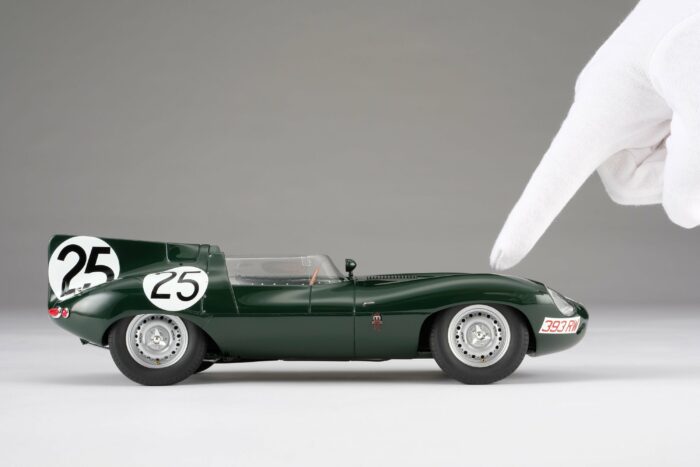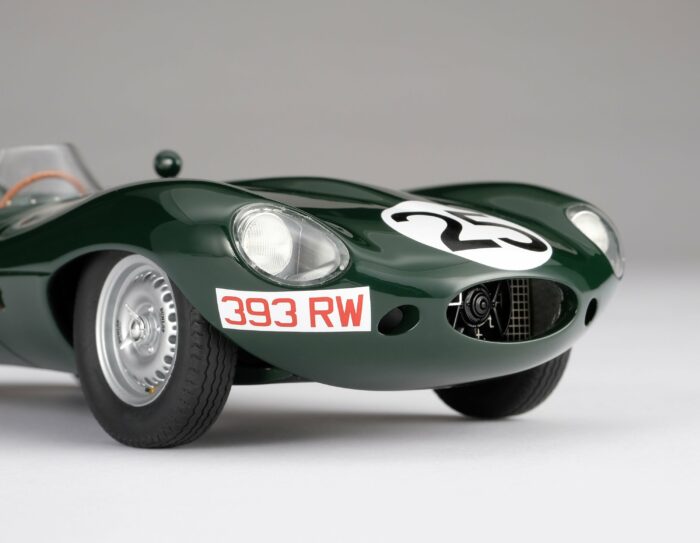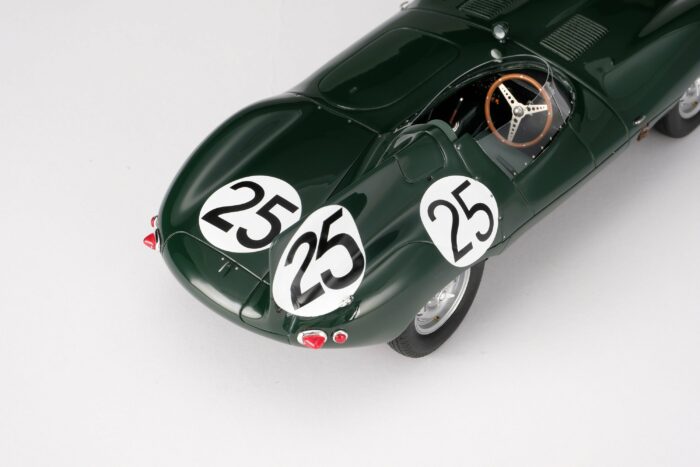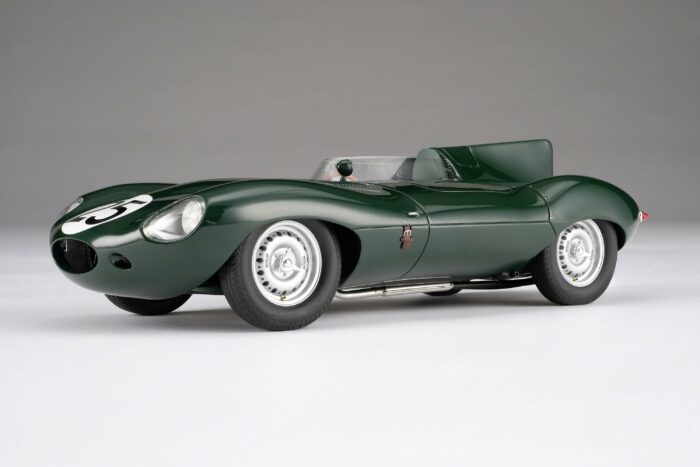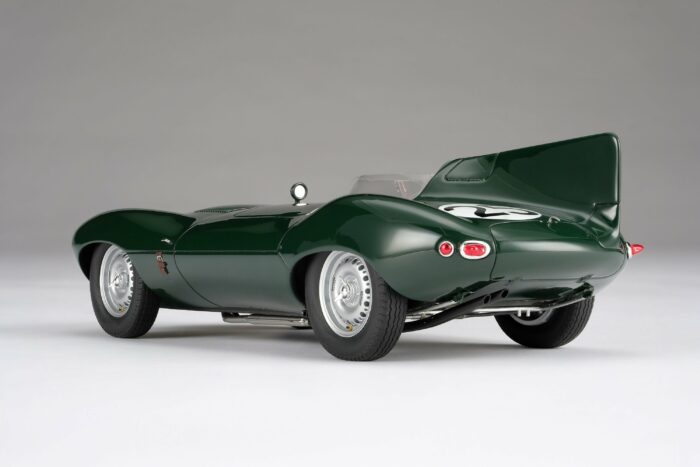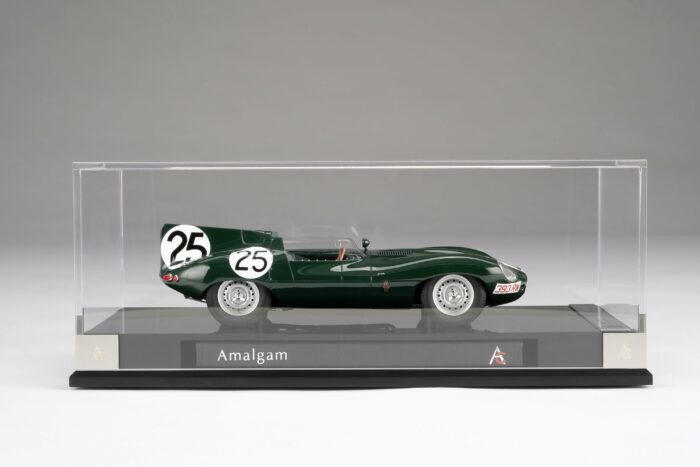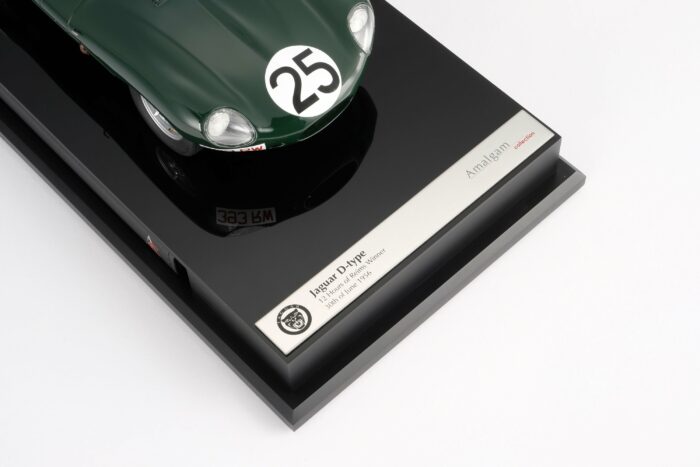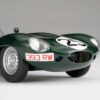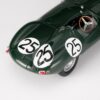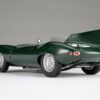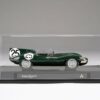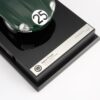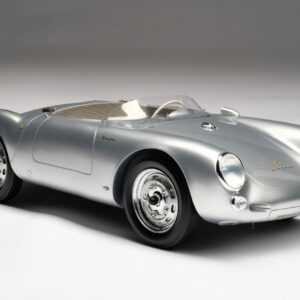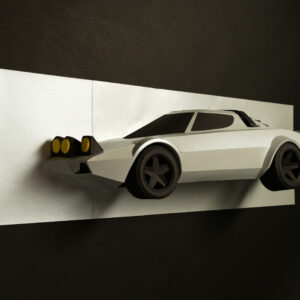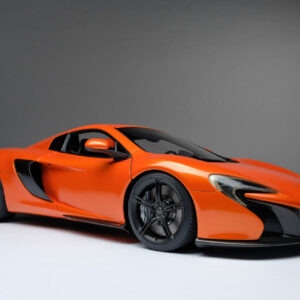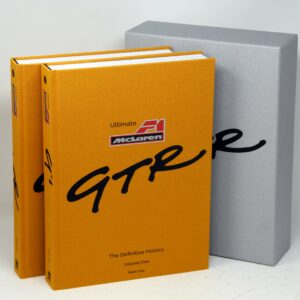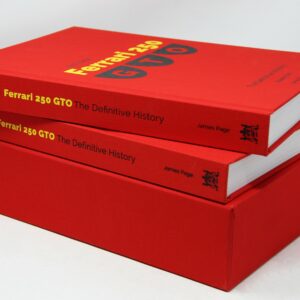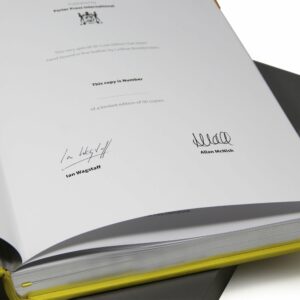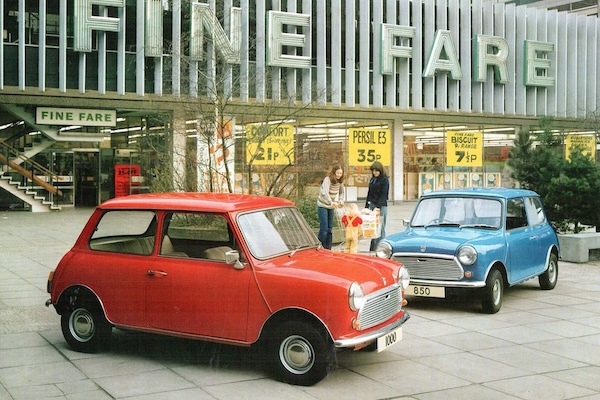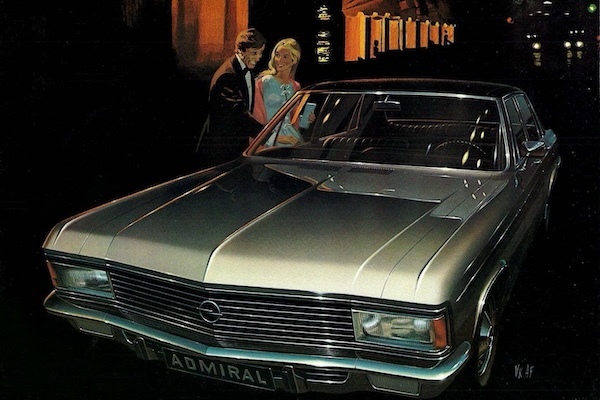Jaguar D-type – 1956 Reims Winner
Amalgam Collection1 307 $
- Exactly as raced to victory by Duncan Hamilton and Ivor Bueb in the 12 Hours of Reims at Reims-Gueux on the 30th of June 1956
- Each model hand-built and assembled by a small team of craftsmen
- 1:18 scale model, over 22 cms/8 inches long
- Available in the iconic British Racing Green exterior paint scheme
- Made using the finest quality materials
- Over 800 hours to develop the model
- Precisely engineered parts: castings, photo-etchings and CNC machined metal components
- Built using original CAD designs developed from a scan of an original car – chassis XKD 505/601
- Archive imagery, paint codes and material specifications supplied by Jaguar Heritage
- Officially licensed 24 Hours of Le Mans product
The Jaguar D-type was designed and constructed with one specific goal in mind: to win the 24 Hours of Le Mans. Although the C-type had decisively beaten Europe’s best at Le Mans in 1951 and 1953, the threat from Alfa Romeo, Aston Martin, Ferrari and Mercedes-Benz made it clear to Jaguar Team Manager “Lofty” England and engineer Bill Heynes that a new car was required. The D-type was the result – stronger, lighter and faster than the C-type, yet powered by a 245 bhp development of the same XK engine. This meant that private owners could easily buy and maintain these cars, which provided a useful back-up to the works team. The D-type proved extremely successful in its mission, becoming one of the most dominant cars in Le Mans history, with victory in three of the four years it competed between 1954-1957. The success of the D-type was not confined to the track either, eventually becoming the road-going XKSS and inspiring many of the most famous cars of all time in the legendary E-type.
Produced between 1954 and 1956, the D-type shared many mechanical components as its predecessor, the C-type. Its front and rear suspension and innovative all-round disc brakes were retained, as was the legendary 3.4-litre straight-six XK engine which was re-worked to achieve 245 bhp, thanks to a shorter block, larger valves and triple Weber carburetors. Structurally, however, the D-type was entirely different. The revolutionary aluminium alloy monocoque construction was a marked departure from the C-type’s space frame chassis and softer body design and was inspired by aeronautical technology to maximise aerodynamic efficiency. The design was so successful that prototype chassis XKC 401 proceeded to break the Le Mans lap record by a full five seconds during testing in 1954. Reducing underbody drag had contributed to the car’s high top speed; a fin was later mounted behind the driver for stability, with the long Mulsanne Straight in mind. For the 1955 season, factory cars were fitted with a longer nose, lengthening the car by 7½ inches, and the headrest fairing and aerodynamic fin were combined into a single smooth unit, improving the aerodynamic profile, reducing weight and further increasing the car’s maximum speed.
On its debut in 1954, the D-type, driven by Duncan Hamilton and Tony Rolt was denied immediate success by horrific conditions, losing out by just under three minutes to Ferrari, around half a lap (roughly less than 5km) of the circuit, even after recording a shattering top speed of 170 mph. The following year, however, Mike Hawthorn and Ivor Bueb took the chequered flag, giving the D-type its maiden Le Mans title, in an event sadly marred by the deadliest accident in the history of motorsport that prompted their closest competitors Mercedes-Benz to retire from the race. In 1956, Jaguar claimed another victory, as the small Edinburgh-based Ecurie Ecosse team saw their D-type, driven by Ninian Sanderson and Ron Flockhart, pip the pursuing Aston Martin, piloted by Stirling Moss and Peter Collins, to the chequered flag by a single lap. Although Jaguar withdrew from motorsport at the end of the 1956 season, 1957 proved to be the D-Type’s most successful year. Privateer teams still represented the D-type and Ecurie Ecosse won again in 1957, sealing a D-type hattrick, raced by previous winners Flockhart and Bueb. They were convincingly victorious, finishing eight laps ahead of their sister car driven by Sanderson and John ‘Jock’ Lawrence. D-types dominated the leaderboard that year, suffering no retirements and taking five of the top six places, cementing its place in Le Mans history as one of the race’s most successful cars.
Away from Circuit de la Sarthe, the D-type was still an incredibly successful racer, earning victories in Europe and the United States at tracks like Aintree, Goodwood, Silverstone, Watkins Glen, Willow Springs and Daytona. The Briggs Cunningham team scored a major win using a D-type at the 12 Hours of Sebring in 1955: Mike Hawthorn and Phil Walters leading all but one lap to reach the chequered flag first. Another two victories were claimed at the 12 Hours of Reims by the Jaguar Works team; in 1954, Ken Wharton and Peter Whitehead sealed the D-type’s maiden win less than a month after that narrow defeat at Le Mans, whilst Duncan Hamilton and Ivor Bueb would repeat the feat a year later. Such was the ability of the D-type that, in proficient hands, still taking minor victories a decade later in face of much more advanced opposition.
Jaguar had planned to build 100 D-types before pulling out of motorsport at the end of the 1956 season, the car’s production ceasing with just the 75 models constructed. The 25 remaining chassis were to be repurposed for the road-going XKSS, however, a fire at the company’s Browns Lane plant destroyed most of these chassis, ending the D-type/XKSS story abruptly. However, 62 years later after the last D-type was built, Jaguar Classic announced that they would complete the original 100 car production run, meticulously hand-building 25 new examples. Using the original planned chassis numbers, these Continuation cars were not mere replicas, but literally a new car, built in Warwickshire to the original engineering and using many of the authentic materials and methods used by competitions manager Lofty England and his engineers, along with the original blueprints, exactly as the car had been turned out in the 1950s. D-type clients could choose either 1955-specification Shortnose with the ‘single hump’ or 1956-specification Longnose with the ‘tail fin’, though both specifications included the six-cylinder XK engine with a wide-angle cylinder head and quick-change brake calipers. The Continuation cars were fully intended for racing in vintage events, built in every detail as the original, including its intention to win.
This fine 1:18 scale model of the Jaguar D-type precisely replicates chassis XKD 605 exactly as raced to victory in its classic British Racing Green by Duncan Hamilton and Ivor Bueb in the 12 Hours of Reims at Reims-Gueux on the 30th of June 1956. Built in March 1956 as one of twelve Longnose cars, XKD 605 is the penultimate D-type and was allocated to the Jaguar Works racing team after its completion. Reims was the car’s competitive debut, where Hamilton and Bueb piloted the car to a commanding victory. Bueb and Mike Hawthorn raced XKD 605 at Le Mans the next month, but were kept back by persistent misfiring that was eventually traced to a cracked fuel injection pipe. They finished sixth, completing 280 laps, and setting the fastest lap. The car was rebuilt after Le Mans and fitted with a five-speed gearbox. After Jaguar’s withdrawal from racing, the car was supplied as a used car to the Briggs Cunningham team. Painted in their white with blue stripes racing colours, and fitted with a new works 3.8 litre engine, XKD 605 played a part in Walt Hansgen’s second consecutive SCCA Championship for Class C modified sports cars and was driven by Mike Hawthorn and Ivor Bueb to third at Sebring. The car stayed in the USA until 1961 and then returned to England, subsequently being re-painted to its original British Racing Green colour. It was then lent to Italy’s National Motor Museum, where it remained for almost twenty years before its return to the Jaguar factory. One of the most original D-types in preservation, XKD 605 still has the 1956 Le Mans windscreen, passenger seat and door. It proudly wears its original trade plate 393 RW, having been re-registered with the DVLA in 1996, and the race number 25 from its win at Reims.
This model has been handcrafted and finished in our workshops with the co-operation and assistance of Jaguar regarding original finishes, materials, archive imagery and drawings. The use of supremely accurate digital scanning of chassis XKD 505/601 has allowed us to perfectly recreate every detail at scale. Furthermore, it has undergone detailed scrutiny by both engineering and design teams to ensure complete accuracy of representation.
Note: This is a ‘Kerbside’ model and does not feature any moving parts.
Please note that certain links on this website are affiliate links. If you click on an affiliate link and make a purchase, we may earn a commission.
